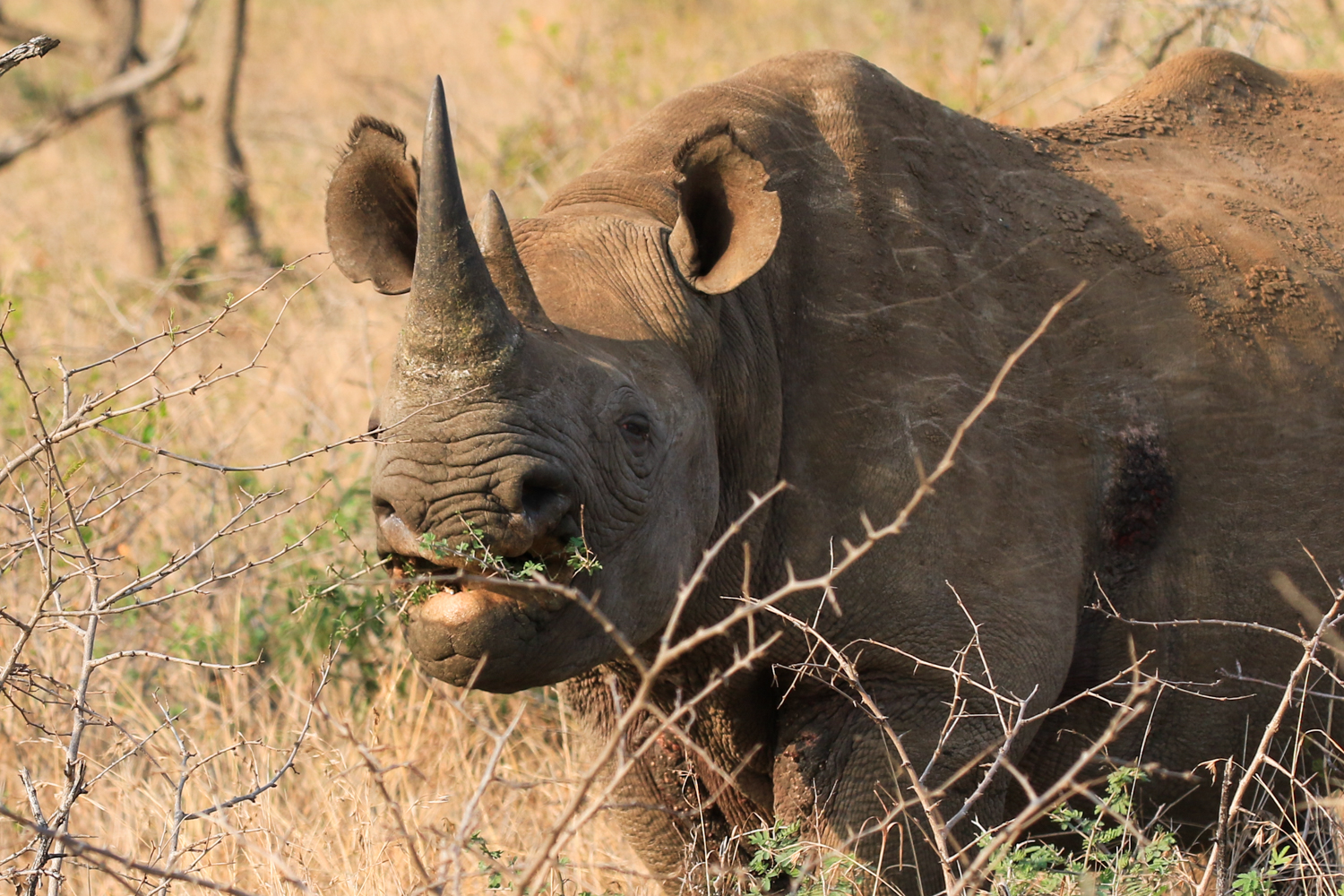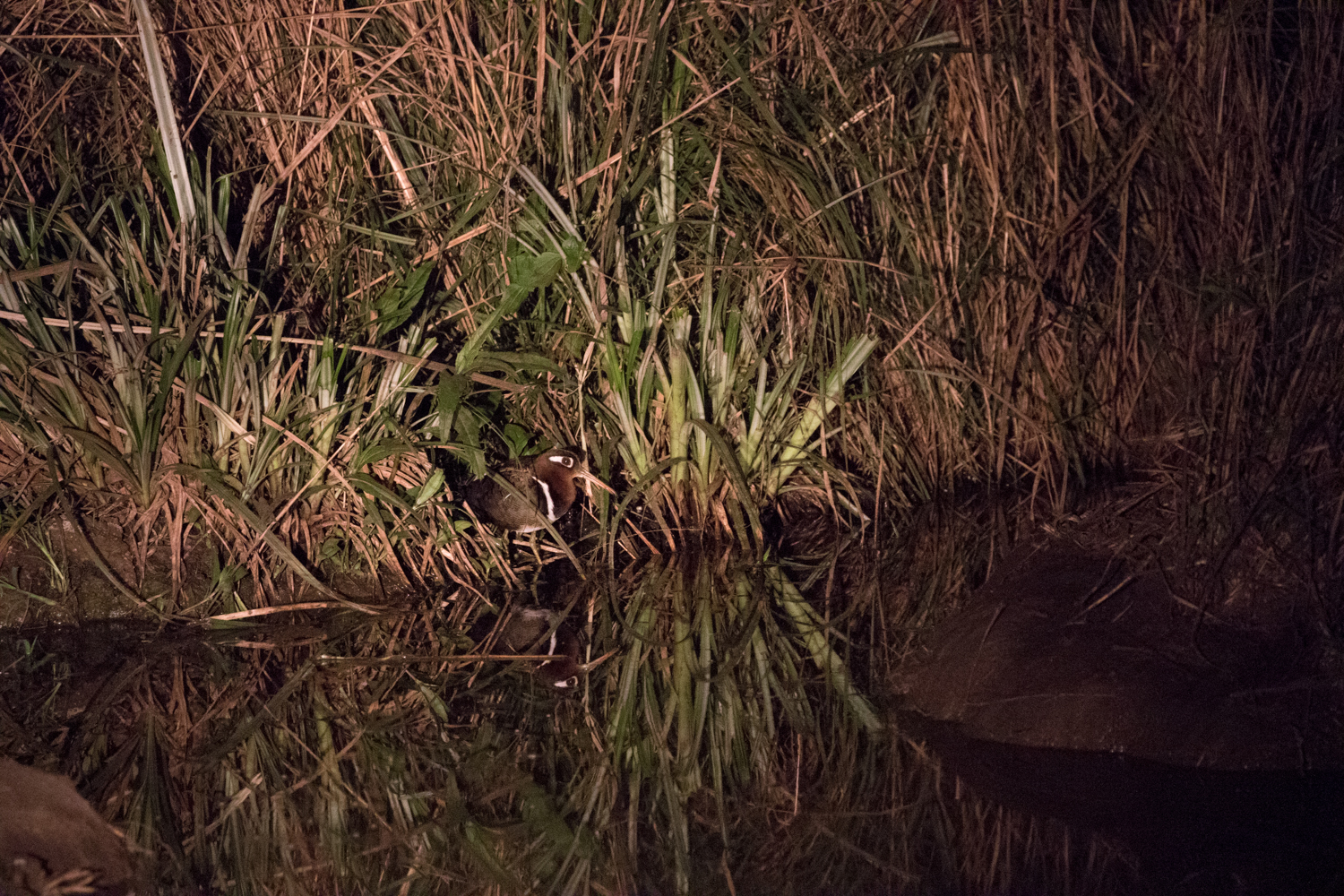Phinda Private Game Reserve
August/September, 2015
Phinda Private Game Reserve in South Africa came with a strong recommendation from our safari organizer. We hadn’t really seen any rhinos on our Tanzanian safari in 2013, so they knew that seeing some on this safari was a high priority for us.
Phinda is a 170 square kilometre property in south eastern South Africa that is jointly owned by the &Beyond company, a safari lodge company operating in a number of African countries, and the Getty family. The reason Phinda was recommended is because it’s in part, a rhino sanctuary and rehabilitation property. So there was a high probability that we’d see a few rhinos.
What clinched it for us in choosing the Phinda Private Game Reserve was the fact that the &Beyond company runs very high spec lodges and camps, and we knew we’d be well looked after. They have six or seven lodges in the reserve, and the one we stayed at was called The Rock Lodge. One of the smaller lodges, it had several big attractions for us. As a smaller lodge, it had a more intimate feeling, and since it was an adult oriented lodge, there would be no kids to disrupt the tranquil setting.
By the time we got to Phinda, it was late in the day. We only had sufficient time to get settled in before the dinner hour was upon us. After dinner it was basically off to bed, and prepare ourselves for an early start the next morning.
Phinda game drives
As with our previous safari in 2013, the day started early with a hardy breakfast, and then into the guide vehicle for our first game drive. Our experience in Tanzania proved to us that a private guide vehicle for just the four of us was certainly the preferred way to go, so for this safari we arranged ahead of time for the same treatment. The difference here though, was that for several of the camps we would have to pay an extra charge to accomplish this. As it turns out, it was well worth it.
Starting out a little later in the early morning than others in the lodge, we had a relaxed start to the day. Fortunately, we didn’t have to drive more than a few hundred yards from the lodge before we came across our first sighting.
Resting in the shade under a tree was a mother cheetah and her three cubs. It’s not unusual for cheetahs to have more than one cub, and as we found out over the course of the next few days, we would be treated to no less than three different mothers with between two and five cubs each.
We sat and watched these first cheetahs for perhaps a half hour, when the mother perked up and started intently looking past our vehicle at some gazelle on the other side of the large clearing we were bordering. She started working her way behind our vehicle, using it for cover, and then all of a sudden she was off. Within seconds she was on the other side of the clearing racing after the game. But there was just enough notice of her attack for the gazelle to out run her. Not because of their speed, you understand. Nothing on earth runs faster than a cheetah. But cheetahs are sprinters. They can only run full out for a very short period of time before they start to dramatically overheat, and must stop to prevent killing themselves. If the prey has enough of a head start they can keep ahead of the cheetah for long enough to escape its reach.
Over the course of our visit at Phinda we were fortunate to see two other cheetah families. One mother had two cubs that were almost full grown, and the other remarkable mom had five very healthy young cubs.
We saw the five cubs first, all bunched together in a tight group with their gaze fixed in different directions. They were obviously watching for their mother who must have been out hunting for a good meal. A few minutes after I shot the image shown below, the cubs became impatient and started moving around in the tall grass trying to find their mom. And find her they did. As she came back they ran enthusiastically toward her for a decidedly happy reunion.
This cheetah mother of five, in the Phinda Game Reserve in South Africa, was a very accomplished hunter. Even with a minor injury to her front leg she easily brought down a female nyala.
tiny cats to giant rhinos
As terrific as all the cheetahs were, they weren’t a first for us. We had seen them in Tanzania in 2013, although we didn’t see any cheetah cubs. So seeing them here was definitely at treat. But really, our main objective for coming to Phinda was to see rhino, and we certainly saw both species in spades.
A male black rhino, with a nearly grown calf from a nearby female in the background. This fellow, in an attempt to impress the female, made several mock charges at our vehicle.
African rhino come in two species, black and white. Although mostly the same in colour, their characteristics are considerably different. White rhino are the larger of the two. In fact they are the second largest land animal in the world next to the elephant. Larger than the black rhino by almost double, the white rhino commonly reaches weights of 5000 pounds and in many cases can reach a weight of around 8000 pounds. Whereas the black rhino weighs between 1500 pounds and 2400 pounds.
The two species of rhino co-exist quite amicably together as they don’t compete for resources. The black, or “hook-lipped” rhino, is a browsing animal and feeds on the bows and branches of trees. The white rhino, also called the wide mouthed rhino, is a grazer which feeds exclusively on the ground vegetation.
Rhino of both species are most often grumpy, but black rhino can be downright obnoxious. Consequently they lead mostly solitary lives. But they do come together under certain circumstances, most notably for breeding. Although a recent discovery in the Kalahari has shown them gathering in high numbers under the cloak of darkness at a special, and secret, waterhole. In this situation the animals displayed a quality of tenderness and camaraderie that was heretofore unknown.
Other Phinda Wildlife
Phinda Private Game Reserve had a lot more to offer than just cheetah and rhino. There were other large cats, like leopard and lion, and a number of herbivores as well.
During our twice daily drives we had great access to all of them, during which we saw two kills. One was of a female nyala, which was brought down by the cheetah mother of the five cubs, just at dusk. The other was of a large male warthog. We didn’t see the actual hunt and attack, but we found the gravely injured animal sometime later as he was trying to carry on. But he collapsed with a tremendous belly wound. We never knew what animal had attacked him, but since it wasn’t around to finish the job, we figured this warthog with it’s enormous tusks must have given as good as he got, and his attacker was also gravely injured. Something that happens when warthogs are attacked.





















































































